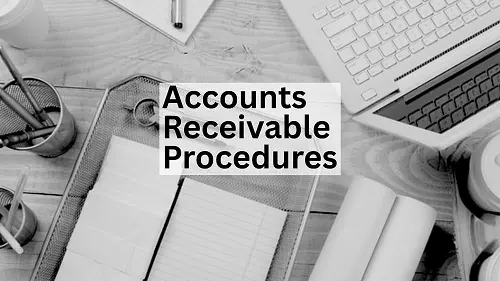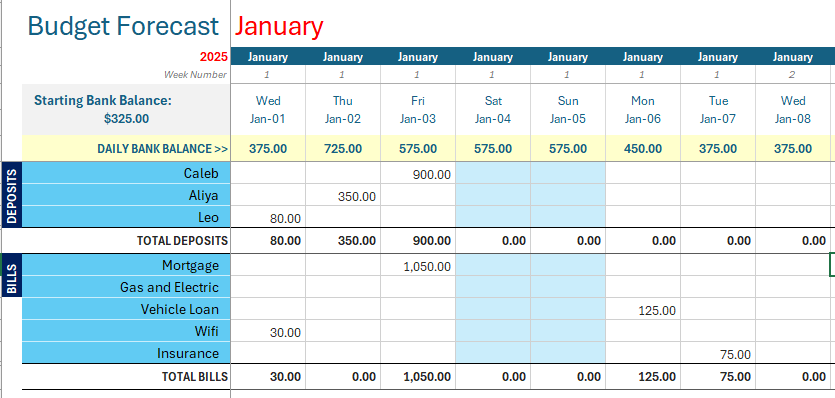- Home
- Bookkeeping Basics
- Receivables Collection
Accounts Receivable Collection Process
Accounts receivable collection is the process of ensuring your customers pay your business invoices in a timely manner.
Receivables collection is important for minimizing bad debts and maintaining a healthy cash flow so your business can pay the bills and continue operating.
Using known strategies to successfully collect payments contributes to positive customer relationships and encourages repeat business and good reviews.
A well-developed and efficient system for managing receivables collections ensures your business will continue to run smoothly and is achieved with good office tools and automated software which streamline the process.
You really can avoid the frustration and worry a bunch of unpaid invoices might make you feel by learning how to manage your AR collections.
how to manage Accounts Receivable Collection
Table of Contents
- Be selective when extending credit to customers.
- Set clear payment terms from the start.
- Regularly monitor invoices and aging reports.
- Communicate calmly with overdue customers.
- Build strong customer relationships and foster loyalty.
- Maintain accurate and organized records.
- Outsource collections for improved cashflow and peace of mind.
- Write-off uncollectible invoices.

1. Extending Credit to Customers
AR collections apply to customers who have your agreement to buy now, pay later. Keep these debtors under control by being selective to whom you extend credit with special application forms and credit references for thorough vetting. Further to this, setting credit limits will restrict the customers from going too far into debt with you.
Another option is to stick with cash only (immediate payment) customers to avoid the administration burden of collecting overdue receivables. However, if you cannot do that because of your industry type, consider offering short payment windows like 7 days from date of invoice. Other payment windows can include 14 days, 30 days or 60 days.
Definition of debtor: A customer who owes money to your business
2. setting clear payment terms
Customer Contracts: Set clear expectations from the get-go so your customers understand your requirements and are not surprised by your demands when they haven’t paid on time. These terms are best established through customer contracts which will indicate what your payment conditions are, interest rates applicable and the consequences of not paying as expected.
Customer Invoicing: When you issue sales invoices to customers, make it very obvious right on the document how much must be paid, the due date you expect to be paid by, and the methods of payment you accept such as internet banking, credit card, ACH or PayPal.
Incentives to pay on time: Consider providing prompt payment discounts - if you can factor that reduction into your income - or issuing warnings of interest charges being added on to overdue balances.
3. monitoring invoices and aging reports
Your invoice collection strategies will work better with a robust system to help you monitor customer invoices and payments.
- Ensure sales invoices are accurately entered into the bookkeeping software and have actually been sent to the customer.
- Regularly update the system to allocate payments received which close-off those invoices so they’re not included in collection reports.
- Produce aging reports that tell you the status of unpaid invoices such as the number of days they are overdue by.
Aging reports spotlight the information you need to appropriately schedule customer contact reminders. Aging reports group unpaid invoices helping you prioritize your collection efforts. For example:
- Groups of 30, 60, and 90 days old, or 1, 2 and 3 months old
- Or invoices displayed by due date
Older unpaid invoices should be at the top of your collections list for persistent follow-up.
4. communicating with overdue customers
Use a series of structured communications (called a dunning process) reminding customers to pay. These will start with friendly reminders, then move to firmer follow-ups, and can end up going all the way to legal action. Here are some suggestions:
When emailing invoices to customers, include convenient payment links in the body of the emails to encourage immediate compensation.
Before the due date within 3-7 days email friendly payment reminders to the customers to give them time to review the invoices and ask questions if they have any.
On the day the invoice is due send another email reminder to point out that by paying ‘today’ they will receive a prompt payment discount (if this applies to your situation).
Once the due date passes, consider a grace period of up to 5 days then start the process of sending firmer emails and making phone calls.
The duration of this process will depend upon what the customers do and upon any new payment plans you might have agreed to (if you can offer that kind of flexibility).
Follow-up phone calls with an email of what was discussed, decided or agreed to, leaving no doubt of the arrangements made.
Here are some call and email scripts to help you on your way to productive communications.
5. building strong customer relationships
Your goal is to encourage the customer to pay without damaging your association. Proactive follow-ups can foster trust and loyalty.
With steady and effective communication, you can preserve positive relationships while also getting paid. This starts from the time you first gain the customer, through all other interactions with them, and through services provided to them.
Ensure your bookkeeping program is updated with all payments received right before you start sending payment reminders to avoid any embarrassment should they have paid already.
Keep your emails and phone calls polite and professional. Be calm but firm and non-threatening as you work out any issues because there may be ethical and legal considerations when dealing with perceived ‘difficult’ customers.
Consider being flexible and offering negotiated payment plans on a case-by-case basis, though you may then want to add interest to the overdue balance every month.
6. keeping accurate records and documentation
Document every interaction with your customer, from contracts to emails and phone calls, and payment plans agreed to. Retaining this information is crucial while working towards payment resolution or subsequent legal action:
- Use a spreadsheet or collections app to record details of conversations for each customer and their overdue invoices.
- Set up an organized electronic filing system to easily find receivables information.
- Your bookkeeping software should have all invoices listed in such a way that you can find them either by date, invoice number or customer name.
Formalize your collection policies in a written document to provide a pathway for you and your employees to follow on a consistent basis. Regularly review the policies to improve internal procedures.
7. outsourcing receivables collection
Outsourcing collections to a business that focuses on this time-consuming work can reduce your stress and improve your cash flow.
A debt collections agency will have an established system for handling delinquent customers and recovering outstanding debts. This will start with demand letters and negotiation of payment plans if the customer already didn’t do that with you. They will warn the customer that non-payment will affect their credit rating which impacts future ability to get finance or loans; this is usually enough to galvanize customers to try and pay something.
The agency:
- generally will not charge you anything until they have actually received payment from the customer, and only then will they take a small percentage of the amount paid, which you can claim as a business expense in a category called Collection Fees.
- will have several options to choose from such as legal action, repossession, pursuing insolvency or bankruptcy or reporting the debt to credit bureaus.
- can get feedback from the customers which you can use to improve your own procedures.
8. writing-off uncollectible invoices
Writing-off unpaid invoices involves closing them off and moving the balance owed from the Balance Sheet to the Income Statement. This is done for tax purposes and to clean-up your accounts.
When to write-off an invoice: Only do this after all collection efforts have been exhausted and it is clear the customer cannot pay anything at all.
How to write-off an invoice:
- issue a credit note in the amount of the invoice to an expense account category called Bad Debts
- apply that credit to the original invoice which will ‘close-off’ the invoice, so it no longer shows as unpaid therefore reducing Accounts Receivable on the Balance Sheet.
If your customer is on a payment plan you will not write off the invoice as this is not a bad debt.
Make sure to keep all the records related to your bad debts (much like you have to keep receipts and bills).
Note: There is also an accounting aspect called Doubtful Debts which is used when the debt is not yet deemed as uncollectible but might become uncollectible in the near future.
In conclusion...
Managing receivables collection effectively is necessary for maintaining healthy cash flow and minimizing financial risks in your business.
Documenting all interactions and organizing your receivables information systematically ensures you have all relevant records for payment resolutions and potential legal actions.
Implementing formal collection policies helps maintain consistency and allows for regular improvements in internal procedures.
Outsourcing receivables collections to a specialized agency can alleviate stress and improve cash flow by leveraging their established systems for dealing with delinquent customers. While these agencies work on recovering outstanding debts, they provide valuable feedback that can help refine your collection strategies.
By integrating these strategies, you can better manage customer debt, reduce financial strain, and create the best collection system tailored to your business needs.
FAQ
What happens when accounts receivable are collected?
What happens when accounts receivable are collected?
Payments are received from customers which are recorded against sales invoices to show them as paid. The bank balance of the business increases and cash flow improves making it easier to pay bills and expenses.
What type of activity is collection of accounts receivable
What type of activity is collection of accounts receivable
Collections are an operating activity due to being directly linked to the main activity of a business, usually sales.
How does collecting accounts receivable affect assets?
How does collecting accounts receivable affect assets?
When a payment is received it reduces the Accounts Receivable asset account and increases the Cash asset account.
What happens when a previously written off account receivable is collected?
What happens when a previously written off account receivable is collected?
When a payment is received it reduces the Accounts Receivable asset account and increases the Cash asset account.
Does collecting accounts receivable increase revenue?
Does collecting accounts receivable increase revenue?
Revenue increases when income increases due to sales.
In the accrual accounting system, when a sale is made on account, income is recognized at the date the sales invoice is issued. The payment received at a later date does not affect revenue due to the income already being recognized previously.
Cash sales with immediate payment instantly increase income and revenue.

